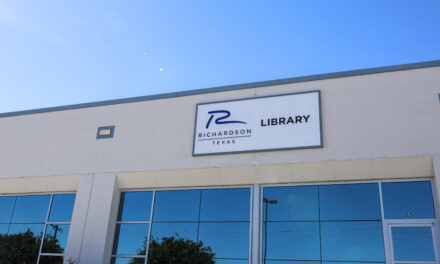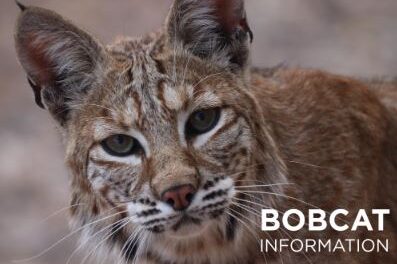Members of the Richardson Radio Amateur Civil Emergency Service (RACES) group operate behind the scenes, only becoming visible during rare emergency situations. Their unique skills, training and equipment are the ideal complement to city, county, state and federal governmental communications mechanisms. In scenarios such as severe weather or at disaster sites, they can be seen in marked vests operating a variety of radio and communications equipment in the field.
Pronounced “ray-ceez,” RACES groups were established nationwide in 1952. They serve within government agencies in times of need and operate under the guidelines of the Federal Communications Commission (FCC).
RACES teams can be utilized for backup communications in disaster response situations, Strategic National Stockpile activations, at points of distribution, and in shelter or weather operations.
A Backup Plan
The Richardson RACES group is comprised of 38 residents whom Scott Greeson, Office of Emergency Management RACES Coordinator, describes as turn-key in their technological know-how and willingness to pitch in.
“They’re our insurance policy when it comes to communications,” Greeson said. “I think our primary communication system in the City is robust and we have a great IT group, but it’s always nice to have that insurance if you need it.”
While technology has grown and advanced exponentially in recent decades, sometimes the old standby is just what is needed. Internet and cellular phone service, along with landlines, are susceptible to the effects of tornadoes, hurricanes and winter storms, as evidenced by the severe weather-induced communications interruptions in February 2021.
RACES operators utilize communications equipment that can use existing infrastructure, but is not dependent upon infrastructure, towers or even satellites. Their radio equipment operates in a very broad range of radio frequencies, from 135 kHz to microwave and even millimeter wave bands, allowing a broad and diverse range of applications for radio transmissions.
“Just the nature of the amateur bands in general is lasting–they’ve been around forever and a day. Some people think of it as antiquated technology, but it works,” Greeson said. “I remember I was back there with Hurricane Katrina 16 years ago, and the big thing was satellite phones and everyone thought they would work, but they failed miserably. Amateur radio was able to come and provide points of communication to help the first responders and help craft the response and recovery efforts. It’s technology that’s been proven and tested time and time again and it’s worked.”
Members of RACES operate their own radio equipment, including portable, mobile and fixed. Depending upon the equipment, operators can send messages via voice, send photos, videos or rapid messages when needed.
“There are handheld devices you can speak directly into, and there are some with a separate microphone. It can be a headset or something similar to what you see in the old traditional movies with a giant microphone and a little push-down button on there,” Greeson said. “If you can imagine it, it’s probably in use out there. The great thing about amateur bands is there’s so many different types of frequencies and ways that we can push communications–even through a laptop using those amateur frequencies.”
RACES members can set up portable or mobile stations using emergency power or utilize the RACES radio room in the Emergency Operations Center, a small room equipped for radio communications needs.
“I dare say this EOC amateur radio setup, coupled with our Richardson RACES team, gives the city a very dynamic communications option and provides capabilities that most jurisdictions could only dream of having,” Greeson said.
Steadfast Volunteers
Richardson RACES volunteer operators have varying backgrounds and professions, but they all share a passion for serving the public and helping the City. In weather incidents, the volunteers set up safely in areas where they can gather firsthand information to report “ground-truth” to the National Weather Service. In some crisis events, members of RACES complete damage and incident reports to give to law enforcement and first responders.
“It gives us another set of eyes and provides information that we can push to our communications channels and dispatch,” Greeson said.
Locally, RACES members may be called upon at any time. Some have even traveled to the coast to assist following hurricanes. They are a treasured resource in Richardson and beyond.
While the members participate purely as volunteers, their work is a serious matter, with annual training required, and readiness with portable “go kits” a must.
Ken Noblitt is the Richardson RACES Radio Officer, helping coordinate activities of the volunteer group. He first entered Dallas County RACES in 1981, harnessing his expertise as a radio and cellular engineer.
“I don’t think most residents know that this group exists,” he said. “We are counted on during blackouts because our technology works when others are down. If something happens, we’re ready to go with radio equipment, cameras, batteries, flashlights and even some first aid. We can stage communications between the Richardson Emergency Operations Center and the state EOC when needed, as a group that is certified under FEMA. We utilize advanced radio technologies that can be called upon when local, state and federal resources are low.”
The work of the volunteers is a true service to the community, but RACES members pitch in simply because they love to do it.
“While we get enjoyment out of the hobby, we like to give back to the City,” Noblitt said. “I think everyone is passionate about the safety and security of every resident.”
For more information, visit www.cor.net/races




